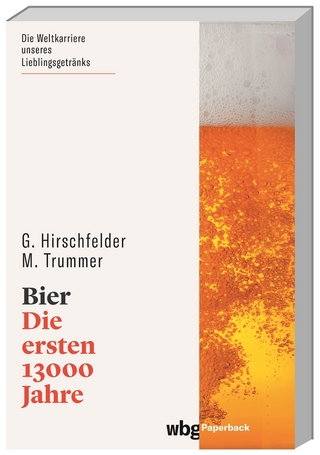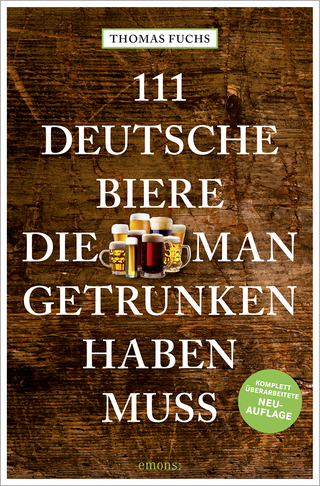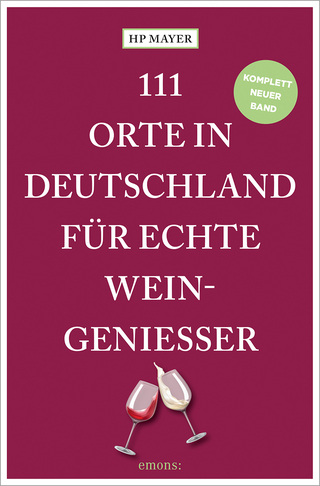
Bursting Bubbles
Quiller Publishing Ltd (Verlag)
978-1-84689-279-0 (ISBN)
Based on a series of articles published in The World of Fine Wine, Bursting Bubbles is a ground-breaking new book that offers the reader an alternate history of Champagne and its greatest growers. Often controversial, it is a no-holds barred look at the world's most famous wine region and the sparkling wine that it produces. It has the potential to change the way wine lovers think about Champagne. In his foreword, multi award winning author Andrew Jefford has called Bursting Bubbles, 'The most engaging book about leading Champagne growers I've read, full of insight and detail' and '...the most refreshing, pretension-pricking, myth-busting and amusingly unfrothy book on the subject I've read.'
Robert Walters is a respected wine merchant, vineyard owner and writer with over 25 years of experience in the trade. His deep knowledge of the Champagne region comes from working with some of the pre-eminent growers of Champagne from Europe, Australia and New Zealand for close to 15 years, giving him a unique perspective.
Foreword — Andrew Jefford
Disclaimers
Prologue
Part 1: Where we follow sparkling Champagne's remarkable metamorphosis from faulty to fabulous
Myth 1: In the name of the father: Dom Pérignon was the father of Champagne
Part 2: In which we drive along a haunted racetrack in search of a singular grower and discover, not for the last time, that all is not what it seems in the world of Champagne
Part 3: Where we meet the revolutionary parents of modern Champagne — science and industry
Myth 2: First place: Champagne was the original sparkling wine
Part 4: In which the author travels to the mountain to meet the rock of Ambonnay, tries to get blood from a stone and ends up leaving on better terms than when he arrived
Myth 3: The good and the great: Grand cru vineyards produce the best wines
Part 5: Where we head to 'Rahnse' to visit the cathedral and then travel south to Épernay, for a stroll down the legendary Avenue de Disney
Myth 4: Silver spoon: Placing a spoon in the top of a Champagne bottle helps preserve the bubbles for longer
Part 6: In which the wine traveller drives south from Épernay to Avize and discovers that all that glitters is not gold
Part 7: Where we encounter more threats to Champagne's 'Great Wine' pretensions and find out what conventional Champagne has in common with baked bread, roasted nuts and seared steak
Myth 5: Holy Trilogy: Only three grape varieties are used to make Champagne
Part 8: In which we pay a visit to Pascal Agrapart, and where the author acknowledges that he can sometimes miss what is right under his nose by playing the man and not the ball
Part 9: Where we unearth even more image problems for Champagne (by comparing the 'approach Champenois' with best practice in Burgundy) and where we learn that the English are the necrophiliacs of the wine world
Myth 6: Blending is better: Champagne is blended in order to produce a better balanced, better quality wine
Part 10: In which the author tries to comprehend Anselme Selosse via a blend of pop psychology and historical minutiae and then plays word games with the man himself
Part 11: Where we blend a few things together in order to produce a histoire vraie of Champagne and then explore the extent to which the brand has come to dominate land in this famous region
Myth 7: Simple fizzics: Where bubbles come from
Part 12: In which we head south to Vertus and visit a great grower making 'crazy wine' in order to remind ourselves, once again, that Champagne is a wine, first and foremost
Part 13: The continuation of our histoire vraie, where the author views advanced capitalism through the rosiest of glasses and perhaps takes the friendship too far by comparing the history of Champagne to that of Camembert and free-range chicken
Myth 8: The shape of things to come: Champagne should be served in flutes
Part 14: In which we travel from Vertus to the historic market city of Troyes, all the while grappling with the ideologies of Champagne's separatists
Part 15: Where the author discusses the problems with the term 'grower revolution' and then offers the reader a choice between two radically different worlds of Champagne
Part 16: In which we visit our first Aube grower and learn what it means to be an outsider in your own wine region
Part 17: The final instalment of our histoire vraie, where the true grower revolutions are revealed — and yes, there were more than one
Myth 9: In the beginning: Champagne is mentioned in the bible
Part 18: In which we visit a vigneron farmer — or is that a farmer vigneron?
Part 19: Where we delve into the remaining key factors that led to the development of Champagne's current batch of great grower-producers
Myth 10: Bursting Bubble: Smaller bubbles are a sign of a high-quality Champagne
Part 20: In which we visit the last of our growers in the Aube and learn that, no matter how seriously we take it, wine's main work is to make us happy
Epilogue: A short manifesto in which the author asks you, the wine lover, a simple, somewhat rhetorical question: 'What sort of Champagne do you really want to drink?'
Notes
Acknowledgements
Bibliography
Index
| Erscheinungsdatum | 23.07.2018 |
|---|---|
| Zusatzinfo | Black and White Photographs |
| Sprache | englisch |
| Maße | 160 x 235 mm |
| Themenwelt | Sachbuch/Ratgeber ► Essen / Trinken ► Getränke |
| ISBN-10 | 1-84689-279-1 / 1846892791 |
| ISBN-13 | 978-1-84689-279-0 / 9781846892790 |
| Zustand | Neuware |
| Haben Sie eine Frage zum Produkt? |
aus dem Bereich


